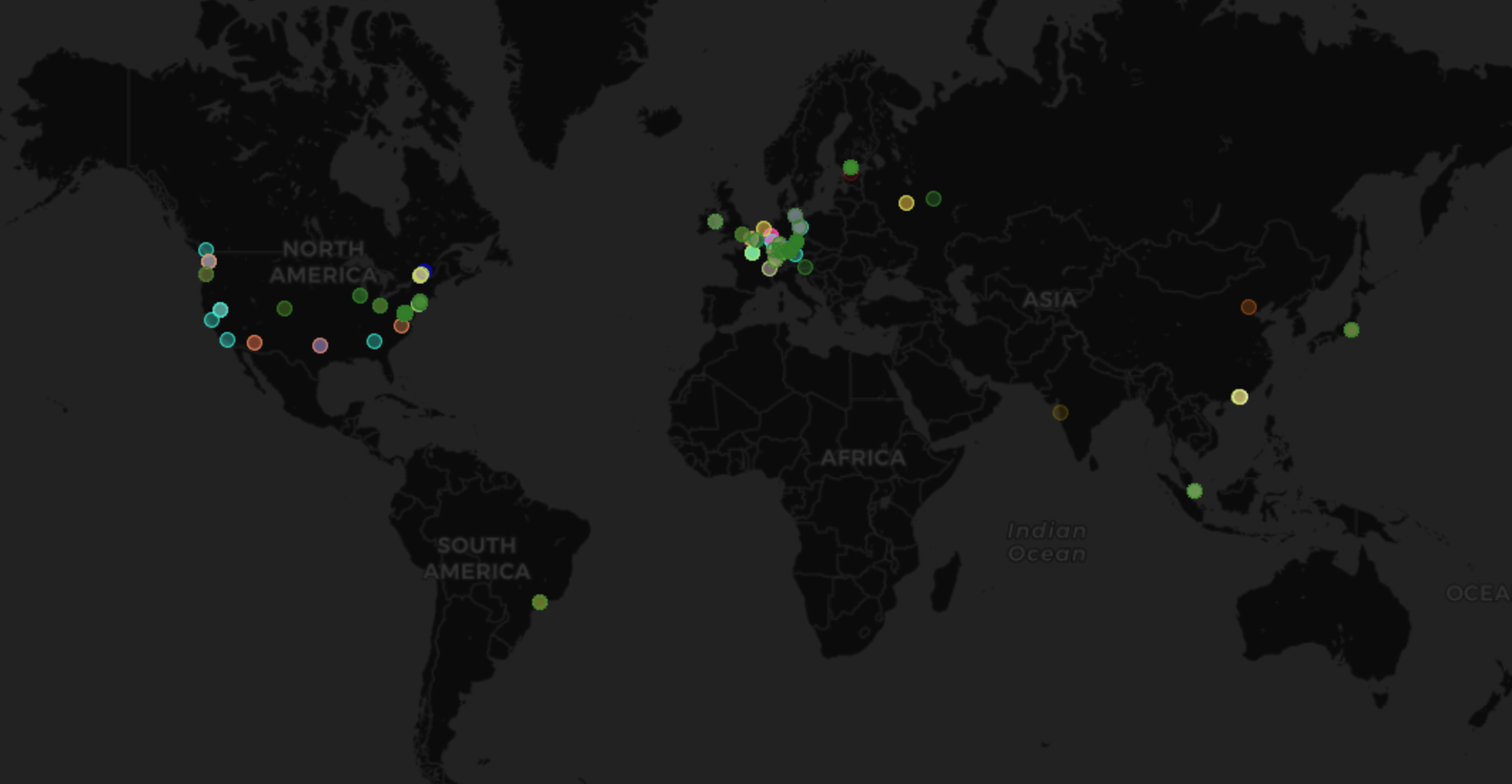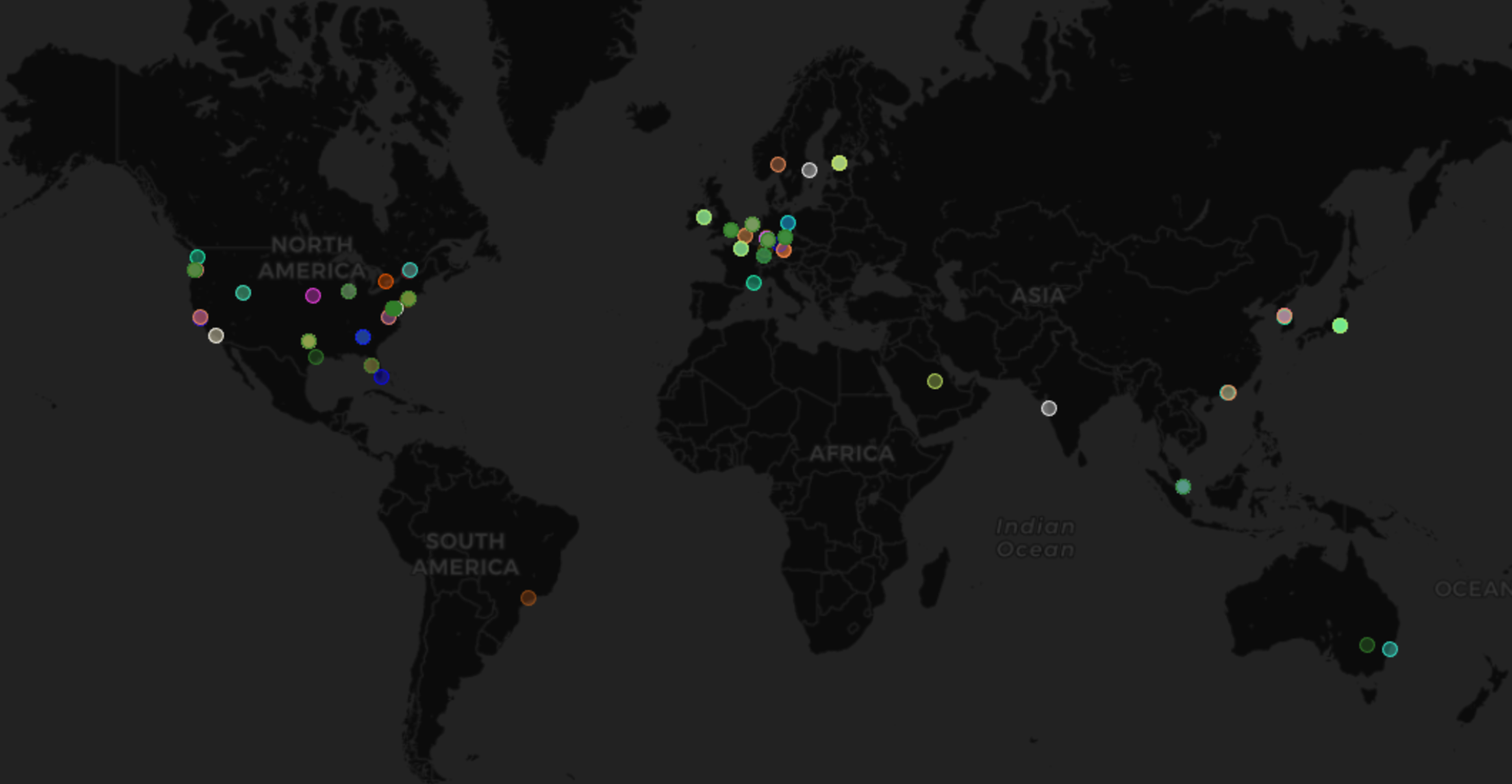- Published on
Ethereum, BSC and Polygon peer distribution
- Authors
- Name
- merkle
- @merkle_mev
The problem
In the ever-evolving world of p2p networks, understanding the geographical distribution of peers is not just intriguing, it's essential for maintaining a robust and efficient system. At Merkle, we are committed to ensuring that our network is not only healthy but also meets and exceeds our service level expectations. To achieve this, we employ continuous monitoring, focusing particularly on the fascinating realm of peering metrics.
Geolocation: A Predominant factor for good peering?
One might wonder, is geolocation a predominant factor for good peering? The answer is nuanced. In the context of Distributed Hash Tables (DHTs), which are fundamental to the discovery process in many decentralized networks, geolocation is not a primary concern. DHTs are designed to be efficient and resilient, connecting peers based on keys rather than their physical locations. This means that a peer in Asia could be just as important for a data query as a peer in Europe, depending on the data they hold and their availability.
However, this doesn't diminish the relevance of geolocation. In practice, peers that are geographically closer can often exchange data more quickly due to lower latency, which can be a significant advantage for certain applications.
Peers distribution maps
In our quest to delve deeper into the geographical distribution of peers across different chains, we recently conducted an analysis involving 33 of our nodes, each connected to ~100 peers and distributed evenly across: Ethereum, Polygon, and BSC (Binance Smart Chain). The findings from this study are not only intriguing but also highlight key differences in the geographical spread and concentration of peers in these networks.
Ethereum: A Testament to geographical diversity
The peer distribution map for Mainnet presents a fascinating picture of diversity. Our 11 nodes on this chain are connected to peers that are scattered across the globe, from the Americas to Asia, Europe, and beyond. This widespread distribution suggests a high degree of geographical decentralization. Such diversity is beneficial for the robustness of the network, as it reduces reliance on any single region and enhances global accessibility. It also implies a more organic growth of the network, possibly driven by a wide range of use cases and a diverse user base.

Polygon and BSC: Concentration in Major Datacenters
In contrast, the peer distribution maps for both Polygon and BSC show a markedly different pattern. The majority of peers for our nodes on these chains are concentrated around major datacenters, such as those operated by AWS and Hetzner. This concentration creates significant hotspots in specific regions, indicating a lesser degree of geographical diversity compared to Mainnet.
Such a concentration can have both advantages and disadvantages. On the one hand, it can lead to lower latency and potentially higher efficiency for transactions and data exchange within these hotspots. On the other hand, it increases the network's reliance on the infrastructure and stability of these datacenters and makes it more susceptible to regional disruptions.
The image below reports the peers distribution on BSC:

The image below reports the peers distribution on Polygon:
